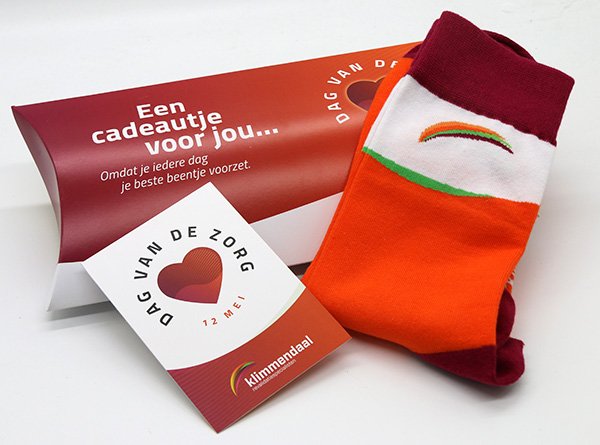
A specific module inside a multiprotocol reflector network, XLX023B identifies the “B” port on reflector number 023 and functions as a virtual room that links hotspots, repeaters, and users across D-Star, DMR, and Yaesu System Fusion. It lets operators connect across modes via internet-backed nodes for global voice and data exchange.
Digital voice reflectors have evolved from single-mode hubs into powerful multiprotocol gateways. The XLX family is one such system: server software that hosts reflector numbers and multiple module ports to enable flexible, community-driven linking. A given reflector number can host several modules (A, B, C, etc.), each functioning as a distinct talk room for nets, events, or testing. This architecture makes modern reflectors highly useful for ham operators, emergency comms teams, and hobbyists who want cross-mode interoperability without complicated commercial bridges. Below you’ll find a practical, research-backed guide to how these reflectors work, how to connect, and best practices for steady, respectful operation.
What a Multiprotocol Reflector Actually Is (Plain Explanation)
A reflector is a server application that accepts connections from radios via hotspots or repeaters, groups those connections into a named “room,” and rebroadcasts voice (and sometimes data) to every connected node. Multiprotocol reflectors were created when the community wanted a single hub able to accept D-Star, DMR, and Yaesu System Fusion (YSF) links rather than forcing users into mode-specific networks. The key benefit is interoperability: you can be on one physical repeater using one protocol and speak to someone on a different protocol if both are linked to the same reflector module.
How Reflector Numbers and Modules Work (Simple Analogy)
Think of a reflector number as a building and modules (A, B, C…) as separate rooms inside it. Each module is an independent channel where people can hold conversations, run nets, or test connections. Module letters let multiple simultaneous groups exist on the same server without audio overlap. This modular layout is ideal for community nets (weekday nets in one module, special interest groups in another) and for hosting different languages, regions, or technical tests concurrently. Publicly maintained lists show where modules are hosted and their current status.
Why Communities Prefer Multiprotocol Reflectors
The main attraction is convenience. Rather than maintaining separate bridges for each protocol, admins can host a single server that accepts multiple linking methods and—if transcoding is available—lets modes converse. This reduces complexity for repeater owners and expands reach for hobbyists. Open communities also contribute dashboards and usage pages so operators know which reflectors are online and how crowded they are, helping organizers pick the best room for large nets.
The Typical Server Setup Behind These Reflectors
At the technical core, servers run Linux and the XLX (or related) software. Admins install dependent packages and optionally hardware or software vocoders for transcoding between codecs (AMBE for some modes). The server hosts web dashboards for status, a TCP/UDP port for node links, and loggers for moderation and diagnostics. Because many reflectors are community-hosted on rented cloud or colocation machines, uptime and bandwidth planning matter—an under-powered host will show packet drops and higher latency, especially during busy events.
How to Connect: Hotspot or Repeater Steps (Practical)
To join a module you usually configure your hotspot or repeater control software with the reflector number and module letter, then initiate a link. Pi-Star and similar hotspot images expose a simple UI: you enter the reflector string (often XLXnnnM for number nnn and module M) and press connect. Repeaters typically have bridging interfaces where the owner sets the routing. After connecting, test by transmitting brief voice to confirm other nodes hear you. Online dashboards also list connected users and recent activity so you can verify the link.
Real-World Uses: Nets, Events, and Public Service
Reflector modules host weekly nets, multilingual groups, and emergency drills. Organizers choose modules strategically (use a quieter module for a training net, a more public room for charity events). During public service or disaster training, reflectors let disparate teams communicate despite different handheld radios, because a simple hotspot or internet link bridges the gap. Many clubs maintain pages listing scheduled nets for local and international participants to join.
Also read this: How Marc Chalamet Bridged French Media and American Life
Transcoding: When Modes Need to Talk (How It Works)
Transcoding converts one codec’s voice data into another so different digital modes can exchange audio. Not all reflectors provide transcoding—when present, it usually relies on dedicated hardware vocoders or specialized software that handles the codec math. Where available, transcoding allows a DMR signal to be rendered intelligible to a YSF or D-Star user connected to the same module. Operators should check reflector docs to confirm whether module ports support this feature before relying on cross-mode talks.
Choosing the Right Module: Practical Considerations
Before linking, inspect the reflector’s module list and recent activity. Pick a module that matches your goal: quiet testing vs. public nets, local language vs. international outreach. Check dashboards or public lists—some reflectors specify which modules are reserved for nets, which are for testing, and which are bridged to other services. Respect module descriptions and schedules to avoid interrupting active groups. Community etiquette helps everyone enjoy cleaner, more predictable connections.
Performance Tips and Troubleshooting (Short Checklist)
- Confirm your hotspot firmware is up to date and supports your chosen protocol.
- Verify internet stability: jitter and packet loss cause audio issues.
- Monitor the reflector dashboard after linking to ensure your node shows as connected.
- If audio is clipped or delayed, check server load and ask the reflector admin about temporary congestion.
These steps solve most common issues quickly, and community forums provide device-specific advice when problems persist.
Security, Moderation, and Responsible Use
Although many reflectors are open, admins can implement controls: passworded modules, authenticated links, or moderation policies. Use these judiciously: open access supports hobbyists, but restricted modules reduce spam and malicious uses. Operators should avoid carrying excessive personal data in voice traffic and follow any local regulations for radio use. Admins frequently post rules on dashboards—read them before linking.
Community Tools: Dashboards, Lists, and Documentation
Public dashboards show module uptime, current users, and recent transmissions; community-maintained lists record reflector numbers and descriptions. These tools are invaluable when choosing a room for a net or for troubleshooting. Many reflector pages include guidance on how to format connection strings for specific hotspot firmware, sample settings, and recommended testing commands. Bookmark your reflector’s dashboard for quick checks during events.
Why Reflectors Matter for Training & Emergency Drills
Because reflectors abstract physical networks, trainers can create interoperable scenarios where responders use different radio systems but still communicate seamlessly. Reflectors reduce the need for physical bridging hardware while letting leadership monitor all links in one place. For emergency drills, using a dedicated module isolates the practice traffic from everyday chatter, making coordination clearer and post-exercise analysis easier.
Hosting Your Own Module: What You Need to Know
Hosting a module requires server space, stable connectivity, and an operator familiar with Linux services and networking. Admins should consider CPU, memory, and bandwidth needs based on expected user load. For multi-mode or transcoding support, additional hardware or software may be necessary. Transparent documentation, scheduled maintenance windows, and a clear contact path for users will keep the module stable and trusted by the community. Guides and how-to articles help prospective hosts get started step-by-step.
The Legal and Ethical Side of Public Reflectors
Operators must respect local licensing regulations: reflectors simply route radio traffic and do not replace regulatory requirements. Avoid broadcasting copyrighted material or private conversations. Admins should maintain logs for troubleshooting but handle them responsibly, balancing transparency with privacy. Community standards often evolve to address new challenges—stay updated and respect any posted policies.
Final Thoughts and Where to Learn More
Multiprotocol reflectors are a practical, community-centered solution for bringing diverse digital radio users together. They reduce friction, expand reach, and can be lightweight to join. Whether you’re a net controller, club member, emergency planner, or curious hobbyist, learning how to choose, join, and respect modules will get you connected quickly and help you contribute positively to the ecosystem. For technical guides, setup walkthroughs, and a reflector directory, see community pages and how-to articles linked below.
FAQs (short answers, practical)
Q1 — How do I find which module is right for my net?
Check the reflector’s public list or dashboard for module descriptions and current activity. Choose a module reserved for nets or one with low activity if you want a quieter space.
Q2 — Do I need special hardware to connect different modes?
Basic hotspots and repeaters support many links; transcoding between modes may require additional vocoder hardware or server support. Confirm with the reflector’s documentation.
Q3 — Can I host my own module for local groups?
Yes. You’ll need a server (Linux), sufficient bandwidth, and familiarity with XLX/XReflector software; community guides walk new hosts through the process.
Q4 — Are reflector connections secure?
Reflectors can be open or restricted; admins may set passwords or authenticated links. Use reliable hosts and follow posted rules to avoid misuse.
Q5 — Where can I read more setup guides and examples?
Search community resources and how-to articles on creating and managing XLX reflectors—several detailed guides and dashboard pages exist to help beginners.
Fore more info: londontechinsights.co.uk






